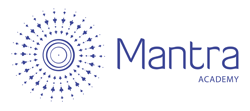Product Design Process
This is a brief introduction on Product Design process while designing Hard Products.
1. Project Brief – This is the fuzzy front end in any design activity. In commercial projects the decision to design for a certain demography comes from Business Heads. Many a times, the design brief is kept broad for not to exclude potential opportunities.
2. Secondary Research – With the wide usage of Blogs and Social Media, the ability to conduct research through web has become an integral part of any research activity. If the project is about a consumer product then reading Customer Reviews on e-commerce portals would bring additional insights that are overlooked by competitors. The information collected from Secondary Research should enable strategies to conduct Primary Research.
3. Primary Research – Primary Research is laborious and expensive. Primary Research needs to have budget allocation to conduct specific activities that are otherwise not to be found through Secondary Research. Also, the choice of Sampling for the given Demography must be justifiable. Some of the Primary Research activities are Home Visits, Spot Interviews, Focus Groups, etc. There are two types of Primary Research;
1. Quantitative Research or Market Research
2. Qualitative Research or Design Research
4. Synthesis – Data collected from research must be synthesised to arrive at Key Findings. Key Findings can reinforce certain assumptions made by the Business team or it can throw light that are totally contrarian to the opinions arrived in the past. However, the key is to find Unmet needs of the end users that are otherwise abstract.
5. Ideation – Brainstorming! Brainstorming! Brainstorming! is the key to ideate. Lots of Sketches/Doodles on Post-Its are the usual sights of an Ideation session. Include all Stakeholders to participate in the Ideation process. You never know where the best ideas come from.
6. Concept Generation – Insights from ideation would enable Designers to generate concepts. Concept Generation involves detailed overview of the chosen idea and working under constraints. Constraints are usually Cost or Technical.
7. Concept Selection – There are many methods to select a concept. The best method is to involve all stakeholders without any prejudice.
8. Engineering Design – Involves CAD modelling, Material selection, Manufacturing Methods, DFMA (Design for Manufacturing & Assembly), Engineering Drawings and final PDS (Product Design Specification).
9. Alpha Prototype – It could be a mockup or working prototype to gauge the interests of the Stakeholders.
10. Beta Prototype – An improved version of the alpha prototype. Aesthetics and Functionality must be incorporated.
11. Testing – Important phase that can find possible challenges faced by all Stakeholders. Very important to remain objective and get inputs for improvement.
12. Iterations – Though the entire innovation process is iterative, after testing, time must be allocated to iterate and bring the idea to life using chosen manufacturing guidelines.
13. Manufacturing – Manufacturing team takes over the project. However, it is important for designers to be involved to ensure the final design is not compromised. Most companies face challenge while transiting from Design to Product because the Production team may find certain design elements challenging to implement. The key for a designer is to remain grounded and find alternatives to manufacture without compromising the design.
This is just a glimpse, there are specialists working at certain stages with whom Designers need to collaborate. Overall, Product Design is an iterative process and an absolute team work.
Raghunath is an Industrial Designer with more than 8 years experience in designing products for Electronics and Consumer Durables industry. He holds Bachelors degree in Mechanical Engineering and Masters in Product Design.

